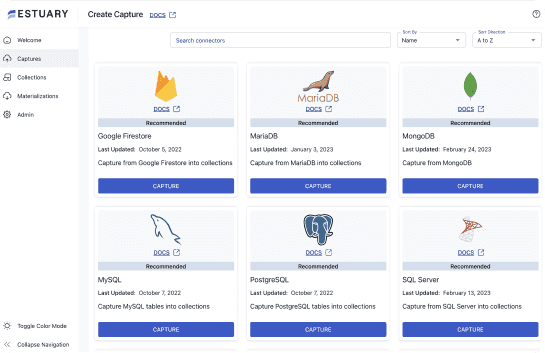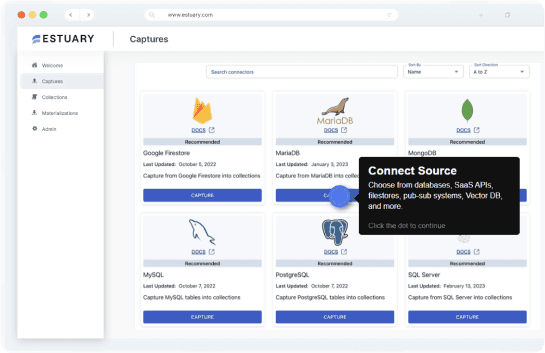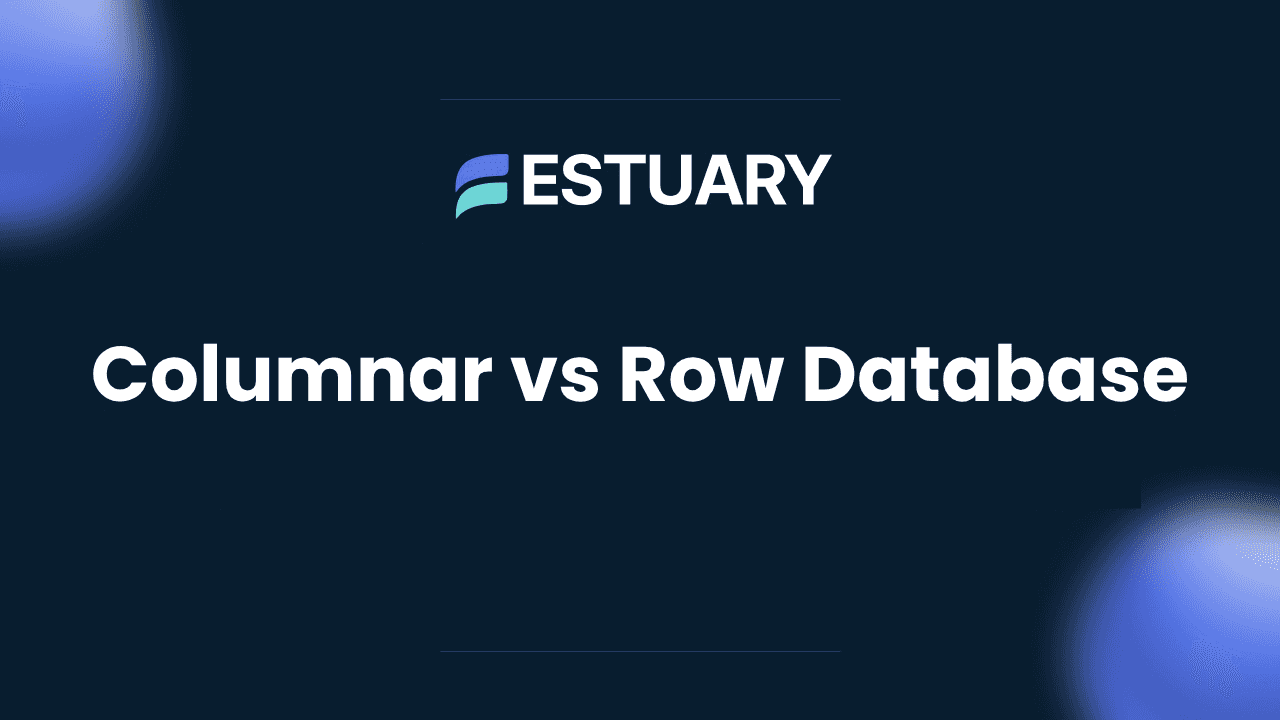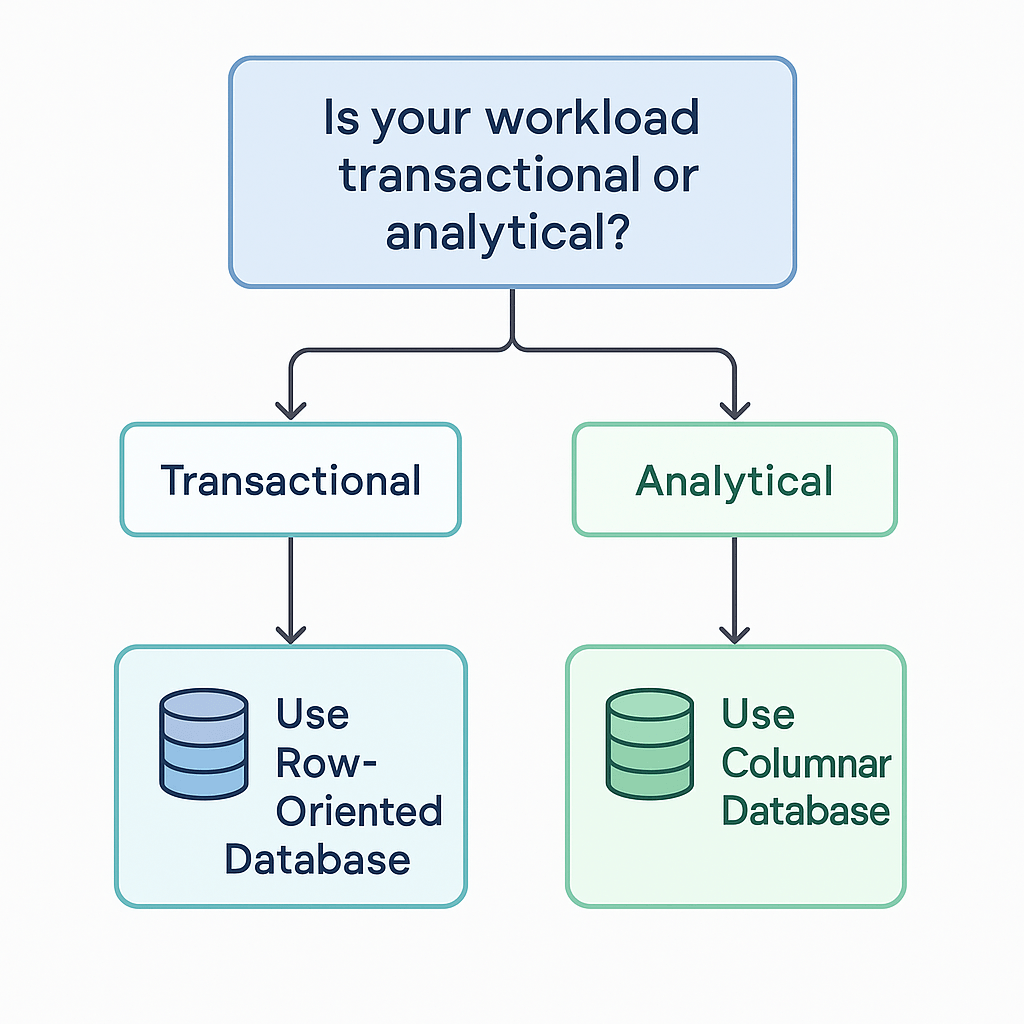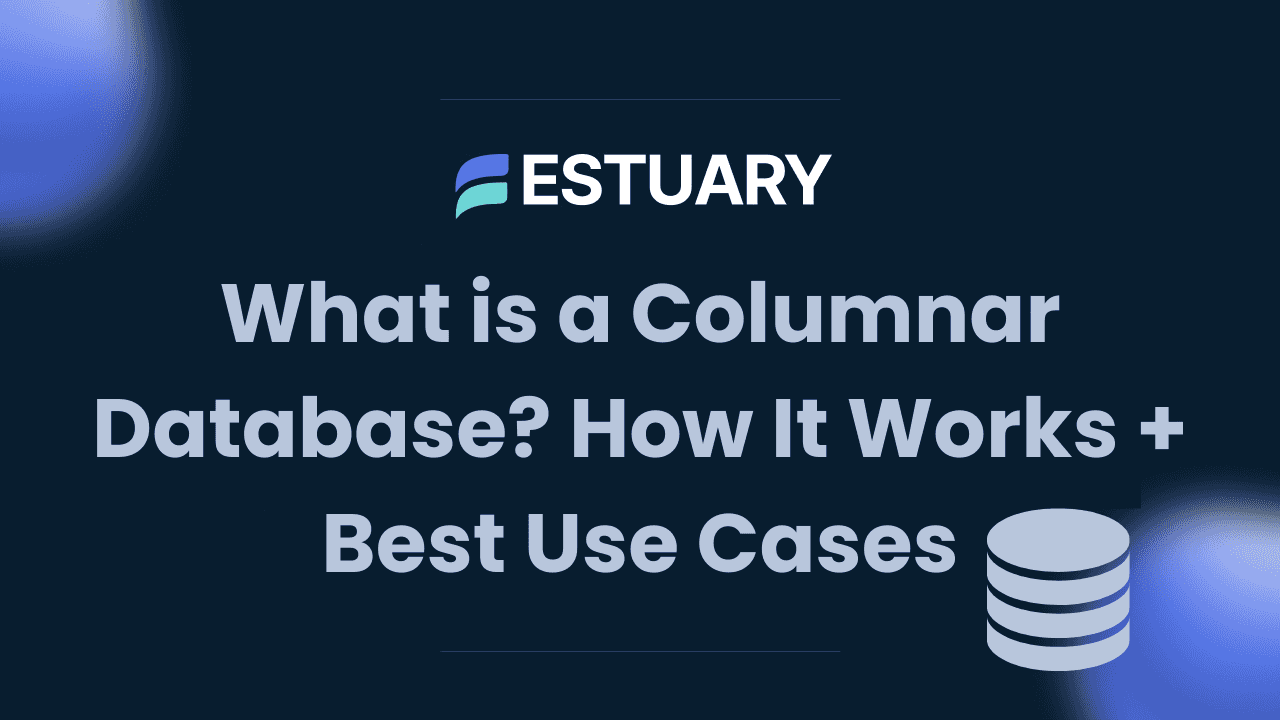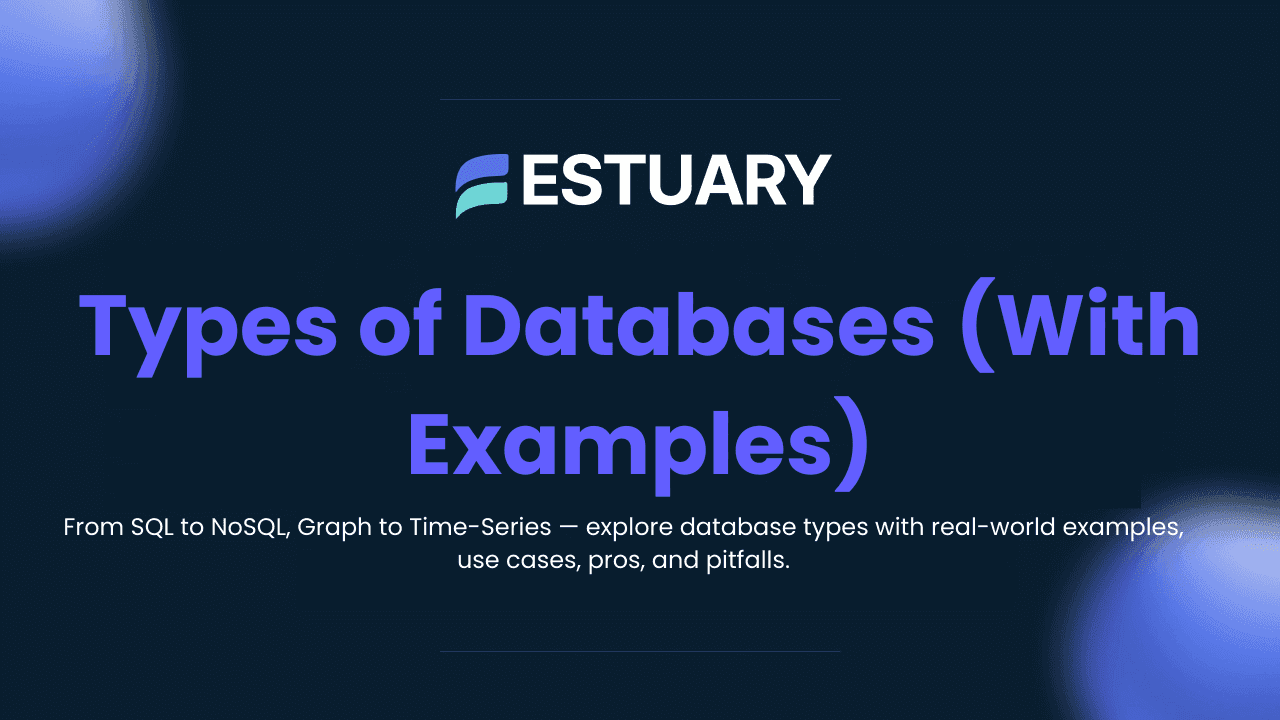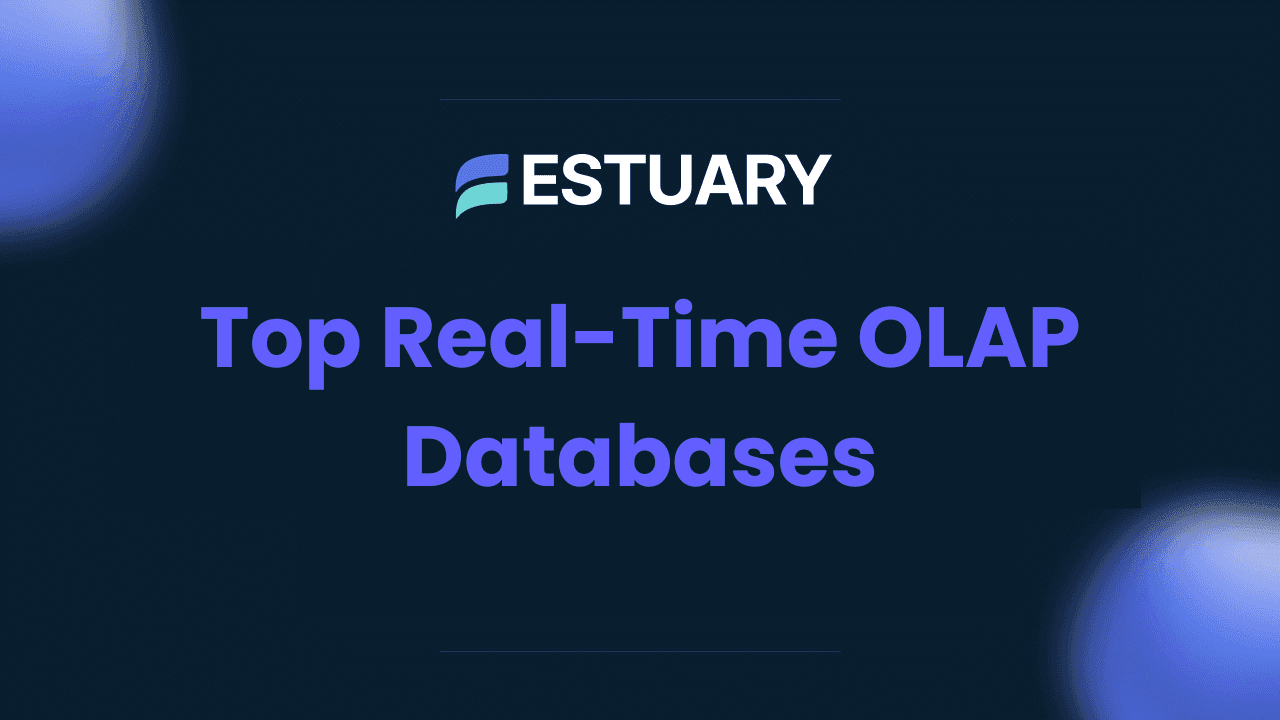
When evaluating modern database systems, the choice between a columnar database and a row-oriented database is a fundamental architectural decision that can directly impact query performance, cost efficiency, and long-term scalability.
So, how do you decide which is right for your business?
The short answer: choose a row-based database if your workload involves frequent insertions, updates, and transactional queries that retrieve entire records. These are typical in operational systems like CRMs, financial ledgers, or ecommerce backends. In contrast, opt for a columnar database if your primary focus is on data analytics, reporting, and aggregations over large datasets — such as in BI dashboards, marketing analytics, or data lake querying.
Key difference:
- Row stores are optimized for OLTP (Online Transaction Processing).
- Column stores are designed for OLAP (Online Analytical Processing).
Each model has trade-offs in storage layout, query efficiency, and compression. If your goal is to future-proof your data architecture or reduce query latency across billions of rows, understanding the distinction is crucial.
This article provides a concise, structured guide to help executives and technical leads choose the right database model by aligning technical features with business use cases. Let’s dive deeper into how these storage formats work and when to use each one.
What is a Row-Oriented Database?
A row-oriented database stores data one record at a time. Each row contains all the values associated with a single entity, such as a customer, order, or transaction. This format mirrors how users often interact with spreadsheets or form-based applications: all the details about one item grouped together.
When you execute a query like SELECT * FROM users WHERE user_id = 123, a row-based engine can quickly locate and return the entire record. This makes row databases ideal for Online Transaction Processing (OLTP) systems that demand high-speed inserts, updates, and lookups.
Common examples include PostgreSQL, MySQL, Oracle, and SQL Server.
But is that all? Not quite. Here are a few key characteristics:
- Fast for transactional queries: When applications frequently read or write entire rows, this model shines.
- Efficient for frequent writes: Because data for a full record is stored together, updates involve fewer disk reads or writes.
- Ideal for operational systems: CRMs, ERPs, ecommerce engines, and other apps with high user interaction rely heavily on row-oriented stores.
- Schema enforcement and ACID guarantees: Row databases typically offer strong consistency and transactional integrity, which are essential for mission-critical systems.
Ask yourself: Do we need to insert, update, or delete many individual records per second? Are queries mostly fetching full rows rather than analyzing patterns across columns?
If yes, then a row-oriented database may be the right foundation for your workload.
What Is a Columnar Database?
A columnar database stores data by column rather than by row. Instead of grouping values by record, it organizes values by field, all customer names together, all order totals together, and so on. This layout enables high-performance analytics by reading only the relevant columns needed for a given query.
In the context of columnar vs row database architecture, this format is tailored for analytical workloads. That’s why columnar databases are the engine behind many Online Analytical Processing (OLAP) systems, such as Amazon Redshift, Google BigQuery, Snowflake, and ClickHouse.
Here’s what sets a columnar model apart:
- Faster analytics on large datasets: Instead of scanning every column in every row, the engine accesses only the necessary columns, reducing I/O and improving speed.
- Exceptional compression: Because each column stores similar data types, compression algorithms perform significantly better, reducing storage costs and boosting query speed.
- Optimized for aggregations and filters: Count, sum, average, and other operations across billions of rows become faster and more efficient.
- Scales with your analytics needs: Ideal for business intelligence dashboards, data lake queries, and event stream analysis.
Wondering whether this is overkill for smaller applications? Consider this: Do your queries typically analyze trends across a few fields over millions of records? Are your data volumes growing faster than your ability to query them?
If so, a columnar database might be exactly what your analytics infrastructure needs.
In the columnar database vs row database comparison, column stores offer a clear advantage for read-heavy, analytics-driven scenarios, but that’s only part of the story. The next section dives into the key technical and performance differences between these two models.
Key Architectural and Performance Differences
When comparing a columnar vs row database, it’s not just about storage format. The underlying architecture affects how data is retrieved, written, and compressed. Choosing the right model requires understanding how each handles data at scale.
Let’s break down the major differences.
Storage Layout
- Row Database: Stores each full record contiguously. For example, a user’s ID, name, and email are stored together in one block.
- Columnar Database: Stores values by column. All user IDs are stored together, all names together, and so on. This allows for more efficient access to specific fields.
Query Patterns
- Row Databases perform best when your queries need the entire row. Think of transactional operations that fetch or modify full records.
- Columnar Databases excel when queries access a few fields across many rows. Analytical queries that involve filters or aggregations benefit from this layout.
Write Performance
- Row-based systems are optimized for frequent inserts and updates.
- Columnar systems often batch write operations and are slower for transactional workloads.
Compression Efficiency
- Columnar databases compress data more effectively. Similar data types stored together result in smaller storage footprints and faster scans.
- Row databases have lower compression rates due to mixed data types in each row.
Hardware Utilization
- Column stores leverage vectorized processing and SIMD (Single Instruction, Multiple Data) techniques to scan data faster.
- Row stores rely on traditional execution paths focused on record-based operations.
Scalability
- Columnar systems scale horizontally for analytics, making them suitable for big data environments.
- Row databases may require more optimization and indexing as datasets grow.
If your business depends on high-volume analytical queries, a columnar database provides clear performance gains. But if the need is low-latency transactions, row databases remain the gold standard.
So, how do these differences translate into real-world decisions? The next two sections explore exactly that, when to choose one over the other.
When to Choose Row-Oriented
In the debate of columnar vs row database, row-oriented systems are the right choice when your workload is transactional in nature. These databases are purpose-built for operations that involve frequent, small-scale reads and writes of full records.
Still wondering if a row database fits your needs? Ask yourself:
- Do your applications require real-time inserts, updates, or deletes on individual records?
- Are most queries retrieving entire rows rather than analyzing trends across specific fields?
- Is data consistency critical, with strict ACID compliance?
If you answered yes to any of these, then a row-oriented database is likely the better option.
Ideal Use Cases
- Customer Relationship Management (CRM): Managing user profiles, preferences, and support tickets.
- Financial systems: Processing transactions, ledgers, and account updates with integrity.
- Ecommerce platforms: Handling carts, orders, inventory, and customer records.
- Operational dashboards: Displaying user activity, recent transactions, or real-time system data.
Row databases such as PostgreSQL, MySQL, and Oracle deliver the speed and reliability needed for high-throughput transactional systems. Their row-by-row structure minimizes disk I/O when accessing full records and simplifies indexing for lookup-based queries.
In the columnar database vs row database comparison, row stores remain the go-to solution for OLTP environments. They offer consistency, speed, and data integrity — all essential for operational workloads where every transaction counts.
Next, we’ll look at when a columnar database takes the lead and how to identify analytical patterns that demand it.
When to Choose Columnar
If your data team spends more time analyzing trends than updating individual records, then a columnar database is likely the right tool for the job. In the comparison of columnar vs row database, column stores are engineered for high-speed analytics and scalable reporting.
Ask yourself:
- Are you running complex queries over millions or billions of records?
- Do most queries only require a few columns from a large dataset?
- Is query performance more important than insert speed?
If these questions resonate, a columnar database aligns well with your needs.
Ideal Use Cases
- Business Intelligence (BI): Generating aggregated metrics, KPIs, and performance dashboards.
- Data Warehousing: Storing and querying historical data for reporting and compliance.
- Marketing Analytics: Running segmentation, attribution, and cohort analyses on behavioral data.
- IoT and Event Streams: Capturing time-series data and scanning it for patterns.
Columnar systems like Snowflake, Amazon Redshift, BigQuery, and ClickHouse allow you to slice through massive datasets quickly. Because each column is stored separately, queries that access only a few fields avoid scanning irrelevant data. This makes column stores extremely efficient for SELECT-heavy workloads.
Another benefit is compression. Columnar databases can reduce storage usage by 70 percent or more using encoding techniques like run-length encoding, dictionary compression, and delta encoding.
In the columnar database vs row database decision, column stores offer unmatched performance for read-heavy environments where speed, scalability, and storage efficiency are top priorities.
Before you make your final choice, let’s look at a side-by-side decision matrix to help you evaluate based on your business use case.
Decision Matrix for Executives
Choosing between a columnar vs row database is ultimately a matter of aligning your database architecture with your business workload. To simplify the decision, use this matrix to quickly assess which model better fits your needs.
Business Requirement | Use Row-Oriented Database | Use Columnar Database |
| Do you need fast inserts, updates, and deletes on full records? | ✅ Yes | |
| Are most queries fetching entire rows (e.g., user profiles)? | ✅ Yes | |
| Is strong transactional integrity (ACID) required? | ✅ Yes | |
| Are your queries analytical, accessing only a few columns? | ✅ Yes | |
| Do you run frequent aggregations or large-scale scans? | ✅ Yes | |
| Is query performance on big data a top priority? | ✅ Yes | |
| Do you need high compression for massive datasets? | ✅ Yes |
Still unsure? Here’s a simple rule of thumb:
- If your system supports users, processes transactions, or modifies lots of individual records, go with a row-oriented database.
- If your system is built for analysis, trends, and reports across large datasets, a columnar database is a better fit.
This framework helps decision-makers choose not just based on technical specs, but on business goals and data behavior. In the next section, we’ll explore how hybrid solutions are emerging to bridge both approaches.
Hybrid and Emerging Options
As data workloads evolve, the clear divide between columnar vs row database systems is beginning to blur. Today, several modern platforms offer hybrid capabilities that bring together the strengths of both architectures.
So what if your business needs both fast transactions and deep analytics?
That’s where HTAP (Hybrid Transactional and Analytical Processing) systems come in. These platforms are designed to handle real-time inserts and updates, while also supporting complex analytical queries without requiring data to be moved or transformed.
Examples of Hybrid and Flexible Systems:
- TiDB: Combines MySQL compatibility with distributed analytics capabilities.
- SingleStore: Uses a row store for transactions and a column store for analytics, automatically managing data movement between the two.
- PostgreSQL with columnar extensions: Tools like Citus and TimescaleDB allow analytics over PostgreSQL with hybrid-like performance.
- ClickHouse with materialized views: Though primarily columnar, ClickHouse can simulate row-like performance for specific use cases using secondary structures.
These systems offer a middle ground in the columnar database vs row database debate. They reduce architectural complexity and eliminate the need to maintain separate operational and analytical databases.
Still, hybrid systems are not a perfect fit for every scenario. They may introduce operational overhead or require tuning to balance workloads effectively.
Ask yourself:
- Do you want to avoid maintaining separate OLTP and OLAP systems?
- Is your application growing into both real-time operations and analytics?
- Do you need flexibility to scale different types of queries without major redesign?
If yes, it may be time to explore hybrid databases that deliver the best of both worlds.
In the final sections, we’ll look at real-world examples and summarize how to make the right decision based on your priorities.
Real-World Examples and Case Studies
Understanding theory is helpful, but seeing how real businesses use row-oriented and columnar databases can clarify your decision.
Let’s examine how different industries apply these models in real environments.
Example 1: Financial Applications Using Row-Oriented Databases
A fintech company managing millions of customer transactions per day relies on PostgreSQL. Every action — from account balance checks to transaction logs — involves writing and reading complete records with full consistency. The row-based structure ensures low-latency access and strong ACID compliance.
Why it works:
- Frequent writes and updates
- Need to read entire rows for accuracy
- Critical for real-time decision-making in finance
Example 2: E-Commerce Analytics Powered by Columnar Databases
An online retail brand uses Snowflake to run large-scale marketing and product performance analyses. The marketing team queries just a few fields (product ID, campaign ID, revenue) across billions of records to evaluate ROI and optimize campaigns.
Why it works:
- Queries focus on a few columns
- Large data volumes
- Business analysts require fast insights across time periods
Example 3: Hybrid Approach in Media Streaming
A video streaming service uses SingleStore to manage user playback sessions and simultaneously analyze watch patterns. Real-time session data is stored row-wise for transactional access. Meanwhile, columnar storage powers weekly content recommendations through aggregated insights.
Why it works:
- Mixed workloads with both OLTP and OLAP characteristics
- Hybrid database eliminates ETL overhead
- Faster iteration for product teams
These real-world applications reinforce that the columnar database vs row database choice must reflect your actual use case. Performance benefits are context-dependent, and what works for one industry may not be optimal for another.
Conclusion
The debate of columnar vs row database systems isn't about which is universally better — it’s about which aligns with your business goals, data access patterns, and performance requirements.
To summarize:
- Row-oriented databases like PostgreSQL and MySQL are ideal for transactional systems where full records are frequently read or updated. These systems support high write throughput, low-latency lookups, and strong consistency.
- Columnar databases such as Snowflake, BigQuery, and ClickHouse deliver superior performance for analytical workloads, especially when querying large datasets across specific fields.
If you’ve been comparing columnar database vs row database solutions, remember this rule of thumb:
- Choose a row database when you're building applications that support users, process transactions, or require precise control over record-level data.
- Choose a columnar database when your focus is on business intelligence, trend analysis, or reporting at scale.
In some cases, hybrid systems may be the right path forward, especially when your infrastructure must support both transactional speed and analytical flexibility.
Next steps:
- Audit your current workloads. Are they OLTP, OLAP, or both?
- Run performance benchmarks using sample queries on both models.
- Involve both your engineering and analytics teams in the decision.
Making the right database architecture choice today will save you from scalability, cost, and performance issues tomorrow.
Power Modern Data Pipelines with Estuary Flow
Whether you're using a row-oriented transactional database like PostgreSQL or MySQL, or a columnar analytics engine like Snowflake, BigQuery, or ClickHouse, one thing is constant: you need to move data between them reliably and in real time.
That’s where Estuary Flow comes in.
Estuary Flow is a real-time data integration platform that lets you stream data from row-based OLTP systems into columnar data warehouses without building or maintaining complex ETL pipelines. Flow uses change data capture (CDC) to capture every insert, update, and delete from your source database and sync it downstream with low latency and full schema integrity.

About the author
Team Estuary is a group of engineers, product experts, and data strategists building the future of real-time and batch data integration. We write to share technical insights, industry trends, and practical guides.

